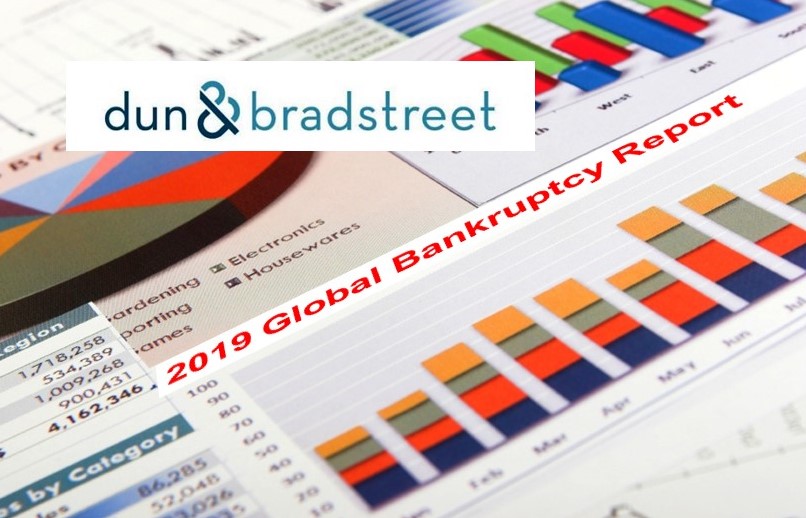Dun & Bradstreet’s 2019 Global Bankruptcy report has revealed that business failures have declined globally, despite increased economic challenges. However, with global economic challenges on the rise, most regions are forecasted to grow more slowly than in 2018, with the number of business failures forecast to increase in the coming months.
Forty-nine percent (49%) of all countries in this year’s report, compiled by Dun & Bradstreet’s Worldwide Network, reported a drop in the number of business failures when comparing 2018 and 2017 data. This decline occurred despite continued economic uncertainties including trade friction between the U.S. and China, the UK’s exit from the EU, and a slowdown of consumer spending in China.
 “The Global Bankruptcy report is yet another reminder of the continuing challenges many businesses face in this current uncertain climate,” Markus Kuger, Lead Economist at Dun & Bradstreet said. “Our growth forecasts for 2019 have been revised downwards since the start of the year and slower growth is expected in most regions. As a consequence, Dun & Bradstreet’s Country Insight Team has also downgraded the country risk rating of eight economies since the start of 2019, compared with only three upgrades.”
“The Global Bankruptcy report is yet another reminder of the continuing challenges many businesses face in this current uncertain climate,” Markus Kuger, Lead Economist at Dun & Bradstreet said. “Our growth forecasts for 2019 have been revised downwards since the start of the year and slower growth is expected in most regions. As a consequence, Dun & Bradstreet’s Country Insight Team has also downgraded the country risk rating of eight economies since the start of 2019, compared with only three upgrades.”
Russia and Japan both recorded a drop in the number of corporate failures in 2018, while failures in the U.S, Germany and Italy were down by 3%, 3.9% and 5.8% respectively. U.K. failures dropped marginally by just 0.3%, indicating a level of stagnation.
Although the report found that business failures have dropped in several large economies, 41.9% of countries covered did see an increase in failures. This is up from 35% of countries reporting increases between 2016 and 2017. Countries in Scandinavia, Australia and Spain have all seen year on year increases in the number of failures in 2018.
Late or non-payments from customers is often a contributing factor to business failure. Payment analysis by Dun & Bradstreet’s Worldwide Network showed that bills in Germany were paid an average 6.7 days late in Q1 2019, much better than the European average of 13.4 days. While in the UK, average business to business payment performance improved slightly from was 14.7 days in Q2 2018 to 13.7 days in Q1 2019. In the US, the likelihood a business will pay more than 90 days later than agreed terms (measured by Dun & Bradstreet’s Commercial Credit Score), fell to a five-and-a-half year low in February 2019.
A copy of the full report, including detailed analysis by country and region is available on dnb.com.
About Dun & Bradstreet
Dun & Bradstreet enables companies around the world to improve their business performance. The global leader in commercial data and analytics, our Dun & Bradstreet Data Cloud- and the solutions it fuels- empowers customers to accelerate revenue, lower cost, manage risk, and transform their businesses. Since 1841, companies of every size have relied on Dun & Bradstreet to help them manage risk and unlock growth.
Dun & Bradstreet’s extensive international network enables millions of executives around the world to make confident business decisions with reliable and accessible information that is updated 5 million times a day on more than 300 million company records. The Dun & Bradstreet Worldwide Network (WWN) is an unrivalled alliance of leading business information providers across the globe.
Source: Dun & Bradstreet


























